DA & DT EXECUTIVE UPDATE VOL. 18, NO. 2

Artificial intelligence (AI) in all its various forms — machine learning (ML), natural language processing (NLP), speech recognition, cognitive systems, intelligent agents, chatbots, and robotics — is generating intense interest across every industry — from consumer electronics, banking, and finance to automotive, insurance, healthcare, government, aerospace, big pharma, retail, and manufacturing.
Organizations are making huge investments in the R&D of new AI technologies (e.g., conversational computing) and modeling techniques (e.g., deep learning) to make their products more intelligent. At the same time, companies are developing new hardware chips specifically designed for computers to support the creation and operation of ML and other AI models.
Similarly, more and more vendors are offering comprehensive platforms and tailored solutions designed to help organizations apply AI to automate a range of business activities previously too impractical to automate (i.e., nonroutine tasks). Additionally, the major enterprise applications vendors (e.g., SAP, Oracle, Salesforce) are adding AI-enabled modules to enhance the capabilities of their respective business applications.
In short, “AI” is the buzzword of our time, and proponents are casting it as a solution to enable companies to reap the benefits of increased productivity, efficiency, and profits and to create new business models and enter new markets. Indeed, some see AI as the greatest development for humankind! Others, however, deem it as a technology that could lead to our possible demise.
Regardless of your personal viewpoint on this technological advancement, key questions exist as to where AI currently stands and where it’s headed: What is the current status of AI efforts within organizations and what are their plans for utilizing AI in the future? What benefits and opportunities does AI offer, and what is the potential for AI to disrupt industries? And, perhaps most important, what issues are hampering efforts to employ AI? Longer term, what does widespread AI adoption mean for society as a whole?
To answer these and other questions, Cutter Consortium is conducting a survey on how organizations are adopting, or planning to adopt, AI technologies and what they believe are the possible impacts on their businesses and industry in general. We also seek to identify important trends as well as issues and other considerations they are encountering or foresee encountering in their efforts.
In addition to gathering and analyzing survey data, I have been conducting telephone interviews with leaders and practitioners from different organizations implementing or working to implement AI applications. Their opinions and recommendations on using the technology adds some depth and richness to the survey responses and will, we hope, contribute to AI decision making at your organization.
This Executive Update — Part I in a series — examines initial survey findings pertaining to the following:
- Status and organizational plans for implementing AI in the enterprise
- The extent that organizations are currently using AI
- The establishment of dedicated enterprise AI groups
- The reason such groups oversee enterprise AI efforts
Survey Methods
The survey findings presented in this Update are the initial results from our (still-ongoing) survey and are based on the answers of 74 organizations worldwide of various sizes. As noted above, I also draw from discussions with respondents whom I interviewed to gain additional insight about AI issues. Where applicable, anonymous quotes from these practitioners are included in my discussion.
Forty-seven percent of responding organizations are headquartered in North America, 23% in Europe, 15% in Asia/Australia/Pacific, and 5% in Africa, with the remainder in India, the Middle East, and South America. Responding organizations’ annual revenues also vary, with 7% having annual revenues over US $50 billion, 11% between $10 billion and $50 billion, 19% between $1 billion and $10 billion, 12% between $100 million and $1 billion, 14% between $50 million and $100 million, and the remaining 37% having annual revenues under $50 million. Finally, Figure 1 expands on the general demographics, showing respondent organizations broken down by industry.
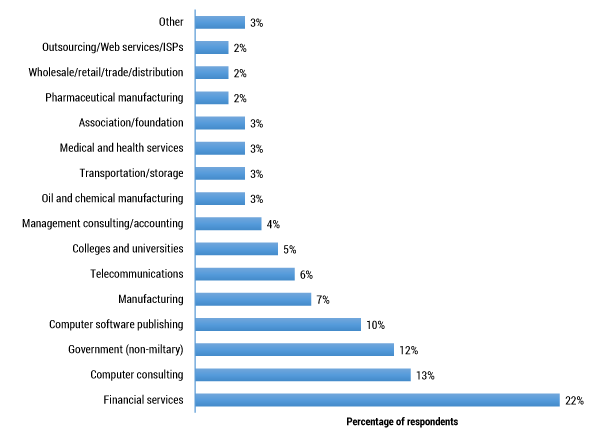
Figure 1 — Respondent organizations by industry.
We include this information to show that our findings are based on a sample of organizations located (i.e., headquartered) in various geographic regions, consisting of a broad range of small, medium-sized, and large companies with yearly revenues ranging from under US $50 million to over US $50 billion. The largest group hails from financial services companies; notably, however, the survey has received input from organizations representing a range of industries as well as government.
Status of AI in the Enterprise
The key question is: to what extent are organizations adopting, or planning to adopt, AI technologies? As Figure 2 illustrates, more than a third of surveyed organizations are currently implementing AI technology, while nearly a fifth plan to do so within one year.
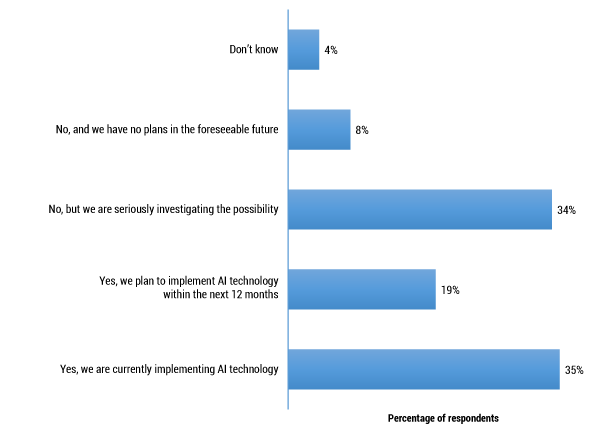
Figure 2 — Is your organization currently implementing, or planning to implement, AI technology?
Our findings indicate that interest in AI is very high. This is apparent when factoring in the plans among organizations that “are seriously investigating the possibility” of implementing AI technology. Overall, 88% of organizations are either already implementing AI, are planning to adopt it within the next 12 months, or are actively investigating the possibility of implementing the technology. Also telling is that just 8% have no plans in the foreseeable future for using AI technology.
Extent of AI Usage
Figure 3 provides more insight into where organizations implementing AI fall in the technology adoption lifecycle. Summarizing, the number of organizations that currently have AI applications deployed in actual production environments is quite limited (11%). Another 16% expect to have AI applications deployed and in production within the next 12-24 months.
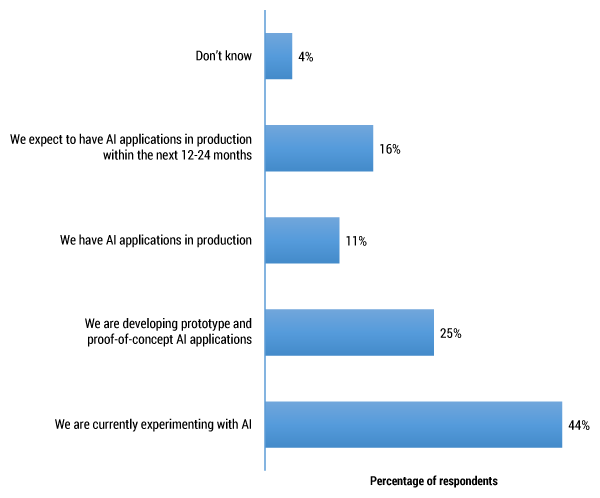
Figure 3 — To what extent is your organization currently using AI technology?
The bottom line regarding the current status of AI in the enterprise is that most organizations (69%) are still experimenting with the technology to validate its potential or are implementing prototypes and proof-of-concept (POC) applications to develop a better understanding of AI’s functionality (i.e., identifying and evaluating use cases).
Interviewing respondents helps provide some insight into why there is currently such a low rate of fielded AI applications. Certainly, much has to do with organizations needing to figure out where and how to apply AI in general. Moreover, as pointed out by a financial services systems architect, there are integration issues associated with legacy systems:
From an AI point of view, and things like interactive chatbots, we’re very typical of a lot of companies: we’ve got an aging set of core systems. Our policy and claims administration and management systems, for instance, are on a 30-year-old COBOL system running on a mainframe. And that is not geared up for conversations you’d like to point a chatbot at and then be able to enact the change being requested by the customer. So the integration capabilities are poor. Consequently, there’s a fairly lengthy roadmap to fix up the backend and the bridges before you can start making meaningful use of AI. And then, of course, the intent would be to look for operational efficiencies by taking all the low-value transactions out of the call center, allowing those people to concentrate on more meaningful conversations, while letting the bots take care of repetitive things. So we’ve recently been working with a vendor using its chatbot capabilities to carry out a POC application as a bit of a first step.
Moving forward, and considering future plans, we should expect an increase in organizations starting to deploy AI applications within the next 12-24 months. During this time, we should also see an appreciable uptake in organizations building prototype and POC applications as they move beyond the early technology investigation/experimentation stages.
Dedicated Enterprise AI Groups
The majority of survey participants report that their organizations have yet to establish a dedicated group to support their AI initiatives (see Figure 4). That said, about a third have done so, with another 17% planning to establish a dedicated AI group within the next 12 months.
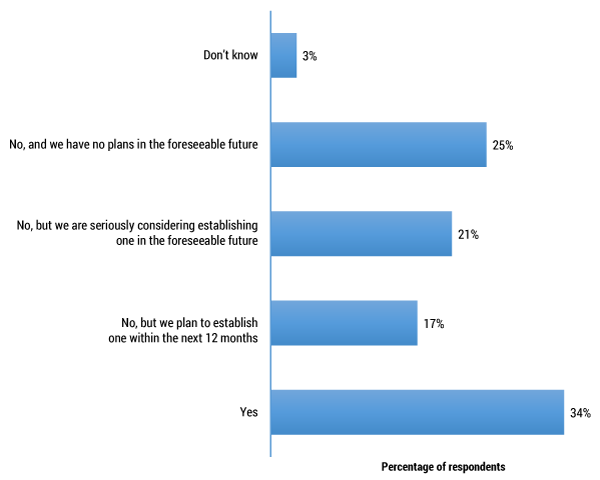
Figure 4 — Has your organization established a dedicated group to support its AI adoption efforts?
In general, interest in forming AI groups is quite high, with 72% of surveyed organizations having either already established a dedicated AI group, planning to create such a group within the next 12 months, or actively investigating the possibility of forming a group dedicated to supporting their AI efforts. Only a quarter have no plans anytime in the foreseeable future to create a dedicated AI group.
Who Is Taking the Lead on AI?
Figure 5 shows the groups or teams that survey respondents indicate as taking the lead for adopting AI into the organization. The current trend is for the digital transformation/innovation team, followed by IT and business strategy groups, to take responsibility for bringing AI into the organization: 56% of surveyed organizations say that these groups are primarily responsible for AI technology adoption.
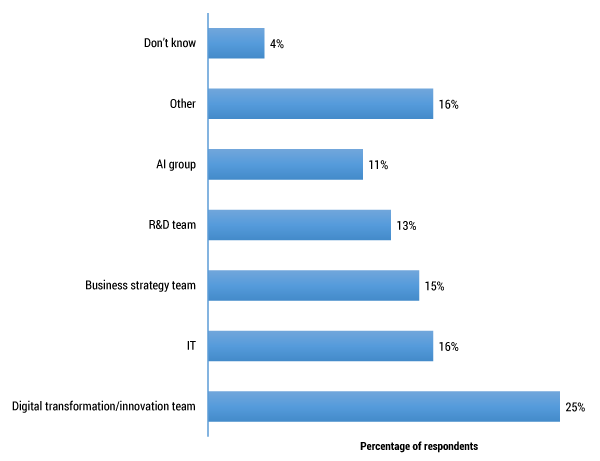
Figure 5 — Who/what group is taking the lead on your organization’s AI initiative?
Other groups cited by organizations as having to lead AI efforts include enterprise architecture, security, and operations. Additionally, several respondents report that their AI initiatives involved combined efforts, including partnerships between IT, business strategy, digital transformation, and operations. Others say that their AI efforts were not yet considered a formal initiative and were still being led by individuals, as this data scientist involved in R&D at an IT consulting firm explained to me:
This came about sort of accidentally. It all started when I chose courses in my interest and found myself sitting in on AI lectures (NLP, data analysis, etc.). Then I noticed this technology is being used in several areas and thought, “Why not have a look?” After several studies, I realized the threats we are facing in a changing world and wanted to educate myself on the basics. For example, I am looking, at the moment, at a formal software engineering cost estimation modeling (both empirical such as Boehm’s and theoretical models like Putman’s) and whether AI could be useful in this field.
Why This Group?
A follow-up question asked why the particular group or team selected in the survey was picked to take the lead on AI. In some cases (but not all), respondents believe that the group did not necessarily take the lead based on assignment; rather these groups were the first to realize the potential for AI and took the initiative to explore the technology.
For others, the groups were specifically assigned to take the lead because they are typically responsible for discovering and evaluating new technologies in general, and they have the combination of technical skills and business understanding required to implement new, cutting-edge technologies.
Here are some various reasons why a specific group(s) was selected to lead its organization’s AI efforts:
- “To support the company strategy, coordinate efforts, and share knowledge and experience across organizational units.” — Lead solution architect, pharmaceutical manufacturer
- “They have the best overall view on the organization’s strategy and direction.” — Information analyst, IT consulting
- “Client is going through overall digital business and IT transformation, and as part of IT looking to explore all emerging technologies as well — including AI, blockchain, vision systems, and 3D printing, etc.” — CTO, IT consulting, government (non-military)
- “Requirements are very diverse, so multiple groups all take their own way forward and they constantly align.” — Enterprise architect, financial services
- “(Our) group was chosen because of its well-known expertise in this field and because it has the full potential required to further implement AI technology.” — Senior management/policy making, telecommunications
- “Combined approach: we have business data analysts who develop the R models for predictive analytics, while IT supports the RServ implementation.” — IS/IT management, medical and health services organization
- “The value in AI is realized through a business-related view of the world, so business strategy drives those efforts.” — Senior analyst, IT, computer consulting firm
- “AI falls under the mandate of the DTO (digital transformation organization).” — Project manager, aerospace manufacturing company
- “To ensure the proper mix of business and IT and analytics expertise.” — CIO, corporate strategy development, financial services firm
- “Digital transformation is the major program that covers all these innovative initiatives.” — IS/IT management, financial services
- “The innovation team is in charge of the exploration of all new technology.” — IS/IT management, enterprise commercial software provider
- “Group was chosen because it has the technological skills and business understanding to integrate machine learning algorithms into current/future products.” — Instructor, educational, enterprise computer software publisher
- “With the technology background and support from the business, this group oversees AI projects because of their subject matter expertise in architecture, data, cognitive computer, and machine intelligence.” — Enterprise/systems architect, government (non-military)
- “Best fit with experience needed (data warehousing).” — Lead architect, financial services firm
- “Group has staff trained in AI, machine learning, and predictive analytics and the directive to evaluate areas for application.” — Enterprise architect, automotive manufacturing
- “Strategic initiatives are instigated through our strategy team but require IT capabilities to implement (including business analysis).” — Architect, financial services firm
- “To ensure that business benefits are well defined and delivered, not just marketing hype nor self-serving IT objectives.” — Software engineer, IT/computer consulting
Still, for other organizations, it basically comes down to sort of an evolving effort, with various groups assuming more responsibility over time — and as needs arise, as this systems architect at a health insurer told me:
We don’t really have a specific area looking at AI as such or being responsible for it. Rather, the technological innovation areas have sort of fallen into the enterprise architecture team, which seems to be morphing into a sort of technology and strategy team. So they are being looked at as the people who will identify potential uses for technology and run POC-type exercises. But we do have two different parts of the business that are responsible for data analytics. One being a data services team within the IT area — but they tend to be focused on BI and more traditional data warehousing and reporting and operating type efforts. And there’s also a separate team that sits inside the business, which is traditionally responsible for things like forecasting for business operations and profitability and potential changes to products and pricing and those sorts of things. And they have people who are technically advanced and are seen as moving in the machine learning direction.
Conclusion
Our research points to a number of important findings pertaining to the status and adoption of AI in the enterprise:
- Interest in AI is very high. Overall, 88% of organizations are either already implementing AI, are planning to adopt it within the next 12 months, or are actively investigating the possibility of implementing the technology. Looking forward, we should expect a high rate of adoption within approximately three to four years; and, at the latest, within five to seven years.
- Most surveyed organizations are still experimenting with AI to validate its potential. Only 11% currently have AI applications deployed in actual production environments. Most organizations (69%) are still experimenting with the technology to validate its potential or are implementing prototypes and POC applications to develop a better understanding of how and where to apply it. Considering future plans, expect an appreciable increase in organizations starting to deploy AI applications within the next 12-24 months.
- Interest in forming AI groups specifically dedicated to AI initiatives is high. 72% of organizations have either already established a dedicated AI group, are planning to create such a group within the next 12 months, or are actively investigating the possibility of forming a group dedicated to supporting their AI efforts. Approximately a third of organizations “doing AI” currently have established dedicated groups to support their AI efforts. We should expect to see an appreciable increase in organizations forming dedicated AI groups in the near future. Organizations seeking to remain in the forefront of AI adoption and implementation should, if they have not done so already, plan to establish a dedicated group within (at most) 12 months or risk falling behind.
- Current trends show digital transformation/innovation teams, followed by IT and business strategy groups, taking the lead on adopting AI into the enterprise; 56% of surveyed organizations indicate that these groups are primarily responsible for AI technology adoption.
- For many surveyed organizations, AI adoption is not currently mandated from above. For these organizations, the group(s) — or sometimes individuals — taking the lead on adopting AI were not so much picked or assigned, but rather were the ones that took the initial interest in the potential of applying the technology and thus took the initiative for evaluating and experimenting with it on their own.
- Some surveyed organizations are assigning specific groups to lead their AI initiatives from the top. In these organizations, the groups were specifically assigned because (1) they are typically responsible for discovering and evaluating new technologies in general (i.e., innovation/digital transformation), and/or (2) they have the combination of technical skills and business savvy required to implement new, cutting-edge technologies.
Part II of this series will focus on survey findings and trends pertaining to the establishment of detailed strategies for adopting and disseminating AI throughout the organization, trends pertaining to “chief AI officers,” and budgeting trends for supporting AI in the enterprise. In the meantime, if you have not done so already, I urge you to take our survey on AI.
Read the AI&Machine Learning series!
- Part I: Current Status
- Part II: Strategy, Chief AI Officers, and Budgeting
- Part III: Benefits Sought From AI Adoption
- Part IV: How Do AI Technologies Rank?
- Part V: Industry Disruption
- Part VI: More Industry Disruption
- Part VII: Even More Industry Disruption
- Part VIII: Major Challenges to AI Adoption
- Part IX: AI Platform Preferences
- Part X: AI Application Design and Development Trends
- Part XI: Success of AI Application Development Efforts
- Part XII: The Most Viable Cases
- Part XIII: Hype and Potential for Social and Economic Disruption



